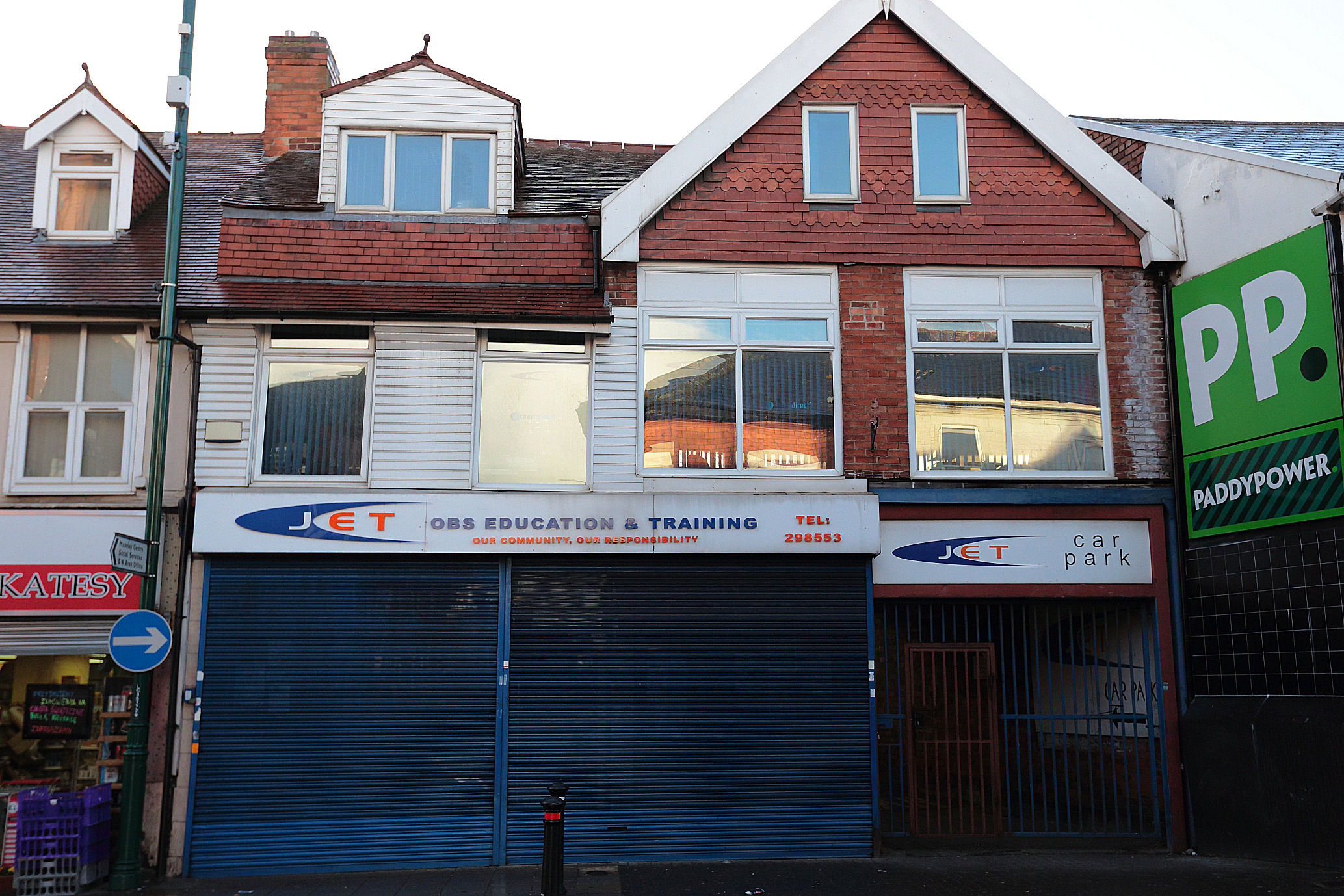Derby News published an article (16 April 2023) entitled, “Not fit for purpose:How long is the Council House “Waiting List” ( Part 2)” which analysed data on the priority allocation / advertising / bidding process for Social (Council) Housing through the Derby Homes portal – Derby Homefinder. It sought to highlight a number of anomalies with the system and raised questions over its fitness for purpose.
In May 2023, Maria Murphy, the Managing Director of Derby Homes responded to this article by writing to her Board and Derby City Council – “Response to online article about housing allocation and bidding system”.
No contact was made with myself.
It is clear from the response that Derby Homes doesn’t properly analyse its own data. It uses averages and percentages without recognising the occasions when such calculations are misleading. It dismisses analysis of data which it choses not to derive itself.
There is a problem with the supply and availablity of social housing. The Homefinder report which is published 6 monthly to the Derby Homes Board needs refreshing – it provides a lot of charts with little usable analysis for decision making. The Derby News article is based on a series of Freedom of Information requests that asked for more relevant data.
The author of this Derby Homes response doesn’t understand the data, nor the issues identified in the article, so concludes that it’s “factually incorrect”.
I have annotated the document in RED, below, to clarify Derby Homes’ misunderstandings and to explain why it is correct.
Derby Homes states that the Derby News article has ” limited circulation” despite not having the data to make that statement. In fact the article post reach was 91,770. For comparison, the Derby Telegraph readership is 21,888 with a circulation of 9,013.
Proper analysis of the data may give Derby Homes more insight into its operation, identify anomalies, and help re-configure policy and process. Perhaps for those people applying it could become more transparent and understandable rather than the current lottery which leaves people waiting for years with no meaningful explanation of their status.
It is evident from the response that Derby Homes simply wants to defend the status quo and is very sensitive to considered criticism. A modern, transparent and accountable organisation would have responded differently… at least publicly.
===========================================================================================================
Hi All,
You may, or may not be aware that on 16 April 2023 Derby News published a further article in which the author makes claims that the Council House allocation and bidding system is no longer fit for purpose.
The article is referred to in Clare’s report to the May 2023 Board meeting. Whilst we are all aware that the online publication has a limited circulation it was felt prudent to respond to the Board and Council on the points made. As previously if you wish to discuss anything with me please do not hesitate to get in touch.
To give some background I think it is helpful to inform you that over recent months a number of FOI requests had been received on this subject, even with this data, the conclusions drawn by the article are, in most points, factually incorrect. [ Derby News: all conclusions drawn are factually correct]
1. The article claim that 98% of applicants on the Housing Register are in the top two priority categories, of these, 20% are in the Corporate Needs Band (highest band) and 80% in the Priority Needs Band.
Based on FOI request 2022-01 for data @ 11 January 2023 the following data was provided on Active applicants (those having bid within the preceding 12 months).
Total Applications – 4922. Corporate Needs Band 21.5%. Priority Needs Band 76.5%. General Needs Band 1.9%.
[Derby News : statement confirmed as correct]
2. The article explains that when homes are advertised they are generally restricted to applicants in a given band, meaning these homes are not visible to applicants and they can not express an interest (bid).
This is correct.
3. The article then goes on to state that 80% of homes are advertised to applicants in the Corporate Needs Band, despite only 20% of applicants being in this Band. The implication being made that 80% of applicants in the Priority Needs Band rarely see homes to bid on.
FOE 2022-1 had advised that in the 6 months preceding 11 Jan 2023 a total of 231 homes were allocated. It is reasonable to assume that most, if not all of these homes would have been advertised to the corresponding band in which they were let. The following data was provided:
82 homes let to Corporate Needs Band = 35% 149 homes let to Priority Needs Band 65%.
Even looking at the full year 2022/23 a total of 462 homes were allocated on a split of 54% to Corporate Needs Band and 46% to Priority Needs Band.
This evidences that the 80/20 split as cited in the article is factually incorrect.
[Derby News:
Based on Derby Homes response.
Corporate Needs Priority Needs TOTAL
April 2022- April 2023 250 (54%) 212 (46%) 462
April 2022- Sep 2022 ( 82) 35% (149) 65% ( 231)
———– ————- ——-
Oct 2022 – April 2023 168 (73%) 63 (27%) 231
======= ======== ====
Derby Homes properties are consistently allocated to Corporate Needs Band – ~ 80% of the total – this is taken from direct monitoring of the adverts ( not done by Derby Homes). The overall percentage depends on the extent to which other Housing associations advertise on Derby Homefinder which is sporadic; these tend to be allocated to Priority/General needs. The source data for the article claims, are the individual adverts on Homefinder, not data inferred from allocations.
Derby News article is factually correct and the point is valid that the % of Corporate Needs adverts are not consistent with the number of applicants in that band thus constraining availability of properties to people in the Priority/General Needs band ]
4. The article claims that around 15-20% of adverts made available to the Corporate Needs Band are restricted to applicants over the age of 55.
We are unable to locate any data source that the author may have used to base this on. [Derby News : the data source was the actual adverts on Derby Homefinder]
Based on FOI 2023/4 we believe that the article may be referring to applicants and not adverts as stated. [ Derby News: No. The article was referring to adverts. Derby Homes assumption is incorrect ] Data had been provided on the breakdown of applicants aged over 55 and in the Corporate Needs Band @ 11 January 2023. This figure was 24.6% (eligible for 1 & 2 bedroom homes). It is possible that the author is unaware that some homes are age designated and restricted to those applicants over the age of 60, or in receipt of Personal Independence Payments. Such homes may be advertised and subsequently allocated within any of the band types.
5. The article states that only 20-30% of applicants in the Corporate Needs Band are over the age of 55, this means that these specific properties are visible only to less than 5% of applicants looking for a one or two bedroom home.
The percentage of applicants over the age of 55 had been confirmed as 24.6%, in relation to ‘properties’ we are not clear to what the author is referring and do not recognise the conclusion being drawn.
[Derby News: Derby Homes hasn’t understood the issue. 5% of the people looking for a 1 or 2 bedroomed property are over the age of 55, yet 20% of the adverts for this size of property are restricted to people over 55 ]
6. In some cases, less than 10 applicants placed bids.
It is not clear to which property adverts the author is referring. The average number of bids per property size for the preceding 6 months to January 2023 was as follows:
1 bed – 138 adverts – 10,409 bids made – average 75 bids per property
2 bed – 63 adverts – 6804 bids made – average 108 bids per property
[Derby News : Derby Homes is using averages across all property types, and priorities, in its response. This is flawed as the number of bids is heavily skewed towards “General Needs” and “Priority Needs” especially where there are no age restrictions. The statement in the article refers to 1 or 2 bedroomed properties, advertised to Corporate Needs band, and which are restricted to over 55s ]
7. The next assertion is that many people in the Corporate Needs Band do not bid. It clarifies correctly that those in the Corporate Needs Band should be the applicants in most need, but then states that only 10% of those people applying for a one or two bedroom home, categorised as Corporate Needs Band actually place a bid.
Again, we are not clear on what data the author is using to draw this conclusion. [Derby News : actual bidding activity on Derby Homefinder ] After further interrogation of the data within the September 2022 Homefinder Report we draw the following facts:
September 2022 – Total Corporate Needs Band – 1424 applicants. Of which 76% (1064) were active having place a bid in the preceding 12 months. Of the 1064 active applicants, 1006 were eligible for a one or two bedroom home and 73.2% (737) had placed a bid in the preceding 12 months.
[Derby News: The Derby Homes response is that the 737 people who are in need of a 1 or 2 bedroomed property in Corporate Needs band bid at least once in 12 months. Observed data supports the Derby News assertion. Derby Homes does not have the data on how many bids, on average, that a Corporate Needs person makes – all it can say is that they bid at least once!]
8. The article states that approximately 75% of applicants have needs awarded for either overcrowding or under occupation. It then refers to the mutual exchange option as a potential solution for these applicants.
The comments made are correct.
9. The next point made by the article points out inconsistences with two Council Reports (April 2023) and figures released by Derby Homes. The article also challenges the definition of ‘active’ citing that 12 months is not particularly active as homes are added to the register almost daily.
We believe that this refers to a Council Cabinet report detailing redevelopment of The Knoll, Village Street & Warwick House. This report stated there were over 6000 active applicants. The report author has confirmed this was an error. The figures reported by Derby Homes through the Derby Homefinder reports are correct.
10. The author claims that a significant number of people do not bid as they simply do not have visibility of available properties through the Derby Homes Website (Homefinder). He believes that the process is not transparent and leaves many people in very stressful circumstances, prompting many questions. The article seeks to suggest that through a lack of transparency the process is open to criticism and personal discretion.
The facts are that the system creates an electronic shortlist when an advert closes, this is automated and prioritises applicants based on suitability, need, application date and best use of stock. This is transparent and outlined in the Council’s Allocations Policy.
The allocations process then works from the top of the listing with procedural guidance on bypassing applicants. Dip sampling is done periodically to ensure this process is followed.
[Derby News: The Housing Allocation policy does not define the process to a level of detail which ensures that it is repeatable. It is a matter of fact that it is not transparent; applicants cannot see or rationalise why their bids don’t convert into offers within a reasonable timeframe, or where they are in the “queue”]
11. The author asked how often Bandings were reviewed to ensure that they were still appropriate and circumstances hadn’t changed.
Homefinder is a ‘self-serve’ system and it is incumbent on applicants to report any changes in their circumstances, any change notified will automatically update the application. At the point of ‘offer’ circumstances are checked to ensure the applicant remains eligible for the property.
Based on earlier claims that ‘most people do not bid’ the author suggests that there should be a system of ‘demotion’ if applicants do not bid in a given timeframe/number of adverts.
We are not clear on how this conclusion has been drawn. Over 70% of applicants requiring a one or two bedroom home were identified as ‘bidding’ – this does not support the view that “most people do not bid”. The author may not be aware of our process of a rolling review, applicants who have not bid for 3 months receive a prompt from us, and if there is no bid made in 6 months, and there have been suitable homes advertised then the application will be closed.
[Derby News : fully aware of the documented policy and procedure. The point is that someone bidding, just once, doesn’t make them active. Most people don’t bid at a level consistent with their allocated priority.]
12. The author asks who decides what homes are allocated to each band, and who decides the disproportionate imbalance between bandings. Why create age bandings when this further throttles back visibility?
The current quota’s for each band are 60% Corporate Needs Band, 39 Priority Needs Band and 1% General Needs. As detailed in the Council’s allocations policy these are periodically reviewed to respond to any emerging issues to meet housing demand in the city. The process of managing the quota’s is overseen by the Social Housing Options Manager. Age bandings are applied to some homes which are designated and to help create balanced sustainable communities.
13. The author suggests that as 75% of the applicants registered live in a Derby Homes property, albeit the wrong size, Derby Homes could be more proactive in the exchange process. A more lucrative financial incentive? He also asked what was being done to encouraging downsizing amongst tenants who are not registered on Homefinder?
We can not support the claim that 75% of applicants live in a Derby Homes property of the wrong size. [Derby News : the 75% is taken from Derby Homes data released under FOI]
Current landlord data has only been a mandatory field on Homefinder since October 2020. We think the author has assumed that all applicants awarded a need for either overcrowding or under occupation tenants of Derby Homes. [Derby Homes: the article refers to the “active population” not just Derby Homes and is Derby Homes data]
The current figure on Homefinder is 17.9%. The option of mutual exchange is regularly advertised through our communication channels and also through regular conversation by our staff with applicants. The author may not be aware that the Home Release Policy was updated in September 2022 substantially increasing incentives. [Derby News ; the current policy is understood – the point is that it is not effective]
To conclude, the author highlights previous articles on the speed of our New Build programme and states there are 147 homes empty, which includes, 61 due to major works. He alleges that Derby Homes Senior Management are not accountable publicly for their performance and that the whole process should be transformed to make it more visible, transparent and accountable …. And fairer for all.
My comments in response to these closing remarks are that a total of 147 homes against a stock of 12,500 is less than 1.2%. In terms of turning homes around when they become available the performance of Derby Homes is excellent as evidenced through benchmarking. Due to the age of our stock it is inevitable that some homes require major works when they become empty. We are already well aware of the complexities and challenges of new build on the sites within the management of Derby Homes, these as confirmed previously are some of the trickiest and sites which are not attractive to other developers. Derby Homes Senior Management are publicly accountable. [Derby News: there is no evidence of this accountability to the general population who are active in applying for social housing]
All performance information is published and board meetings are held in an open forum. Members of the public are able to attend or submit questions. Derby Homes are also required through the Management Agreement to provide timely performance information to the Council which is overseen by the Council’s Performance & Insight Team.
Categories: Uncategorized










